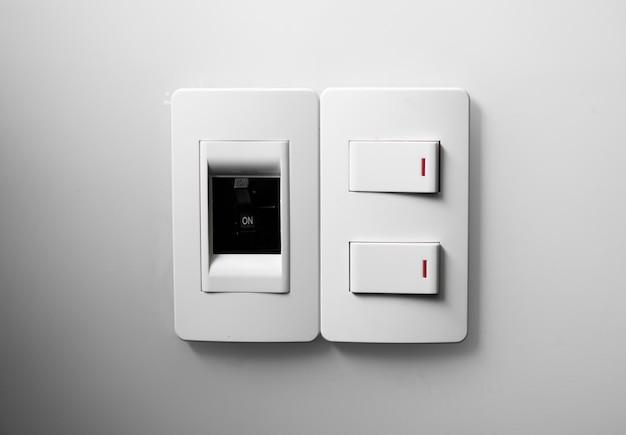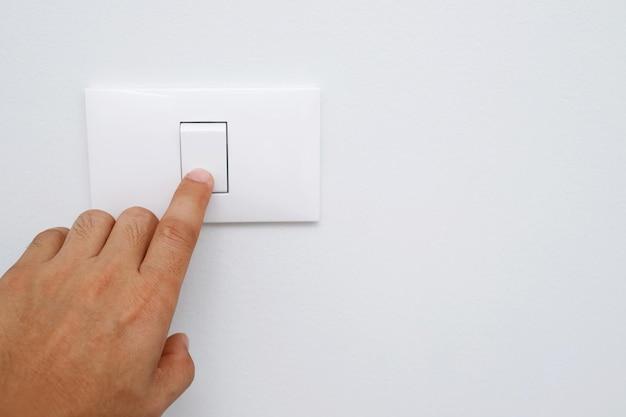Welcome to our blog post on the topic of “What Does Common Mean On A Light Switch?” Whether you’re a DIY enthusiast or simply curious about electrical wiring terminology, understanding the meaning of “common” on a light switch is essential.
In this article, we will explore the concept of the common wire and its significance in electrical wiring. We’ll address common questions such as whether the common wire is load or line, the difference between two-way and three-way switches, and what happens if you wire a three-way switch incorrectly. We’ll also discuss the colors associated with the common wire and its role in connecting various components of a light switch.
Join us as we unravel the mysteries of the common wire and gain a clearer understanding of its purpose and function. Let’s delve into the world of electrical wiring and shed light on the importance of the common wire in your home’s lighting system.
What is the Purpose of the “Common” Feature on a Light Switch
If you’ve ever wondered what the term “common” means on a light switch, you’re certainly not alone. Despite its frequent appearance on the switch, the word can be confusing for many people. But fear not! In this guide, we’ll shed some light on the subject.
Shedding Light on the “Common” Term
Have you ever flipped a light switch and thought, “What’s so common about this?” Well, the term “common” on a light switch refers to the wire connection that is shared with multiple switches in a multi-way lighting setup. Imagine it as the conductor that brings everyone together, like a mediator at a family gathering.
How Does the “Common” Work
In a standard single-pole light switch, there’s usually just one switch controlling the lights. However, things get more interesting in a multi-way lighting system, where two or more switches can control the same set of lights. In this setup, the “common” wire acts as the main connection that carries the electric current to the light fixture.
The “Common” and Its Traveling Companions
To better understand the “common” wire, let’s take a quick look at its travel companions: the “traveler” wires. In a multi-way switch configuration, the traveler wires are the ones that connect the switches together. Think of them as messengers shuttling between different switches, conveying the signal on whether to turn the lights on or off.
Getting the Switches Talking
Now, without the “common” wire, the switches wouldn’t be able to communicate effectively. It’s like having a conversation where no one shares a common language. The “common” acts as a bridge, allowing the traveler wires to transmit the signals back and forth between switches, ultimately controlling the lights.
Where Can You Find the “Common” Wire
You might be wondering how to identify the “common” wire. Fear not, for it’s usually marked or colored differently from the traveler wires. The “common” wire is often black, while the traveler wires are typically red or another color. So, the next time you take a peek behind your light switch, be on the lookout for the wire that stands out from the rest.
Closing Thoughts
Understanding the role of the “common” wire on a light switch can bring a sense of clarity to an otherwise puzzling term. Next time you switch on the lights, you’ll know that the “common” wire is the mediator ensuring smooth communication between switches, lighting up your path with its electrical expertise.
FAQ: What Does “Common” Mean on a Light Switch
Understanding electrical wiring and the terminology associated with it can be confusing, especially when it comes to light switches. One term that often baffles homeowners is “common.” In this FAQ-style guide, we’ll delve into the meaning of “common” on a light switch and address some common questions surrounding this topic.
Is the Common Wire the Load or the Line
The common wire on a light switch is neither the load nor the line. In electrical wiring, the load wire refers to the wire that carries the electric current to a device, while the line wire brings the current from the power source. The common wire, on the other hand, is the wire used in three-way switch configurations to connect the switches together.
What Does “Common” Mean in Electrical Wiring
“Common” in electrical wiring refers to the intermediate wire that connects the two traveler wires in a three-way switch system. When you toggle the light switch, the common wire either receives or interrupts the flow of electricity, depending on the position of the switch. So, think of the common wire as the electrical mediator between the two traveler wires, ensuring your light knows whether to shine or take a break.
What Happens If You Wire a Three-Way Switch Wrong
Ah, the classic fear of wiring mishaps! If you wire a three-way switch wrong, you might end up with a stumped light fixture that doesn’t know whether to turn on or off. This usually happens when the traveler wires are reversed or improperly connected. To avoid befuddling your poor light, it’s crucial to ensure that the common wire remains in the middle while the traveler wires are correctly paired at each end.
What Does “Common” Mean on a Three-Way Switch
On a three-way switch, “common” refers to the terminal where the common wire connects. It usually has a darker-colored screw compared to the traveler terminals. The common terminal allows the switch to control the flow of electricity and determine whether the connected light is illuminated or in darkness. So, the common wire holds the power to brighten or dim your space at your command.
Is the Common Wire on a Light Switch Neutral
No, the common wire on a light switch is not the same as the neutral wire. While the neutral wire completes the electrical circuit to ensure safe operation, the common wire, as we discussed earlier, is specifically associated with three-way switch configurations. Mixing up these two wires can lead to confusion or potential electrical hazards, so it’s essential to understand their distinct purposes.
What Color is the Common Wire
The color of the common wire can vary depending on the wiring standards used in your area. However, in many electrical installations in the United States, the common wire is typically black or sometimes red. Remember, the color-coding may differ, so it’s important to verify the specific wiring conventions applicable to your home or consult a professional electrician.
What Color is the Common Wire on a Three-Way Switch
Similarly to standard light switches, the common wire on a three-way switch is often black or occasionally red in American electrical systems. However, keep in mind that exceptions exist, and local wiring codes or personal preferences may influence wire color choices. When in doubt, it’s best to double-check or consider seeking expert advice to ensure proper identification.
What Is the Difference Between a Two-Way and Three-Way Switch
Ah, the mystical world of switches! The main difference between a two-way and three-way switch lies in the number of switches involved. A two-way switch, also known as a single-pole switch, consists of only one switch controlling a single light fixture or electrical device. In contrast, a three-way switch involves two switches controlling a single light, commonly used for stairways or hallways. The extra switch allows control from multiple locations, adding convenience and flexibility to your lighting scheme.
What Is the Purpose of a Common Wire
The common wire proudly embraces the crucial role of connecting the traveler wires in a three-way switch setup. It acts as the mediator, facilitating communication between the switches and allowing you to control a light fixture from multiple locations. Without the common wire, these multi-switch wonders wouldn’t be able to harmonize their switching powers and illuminate your surroundings with grace and precision.
What Does “Common” Mean on the Back of a Light Switch
When you peek at the back of a light switch, the term “common” refers to the screw terminal that accommodates the common wire. It’s typically distinguishable from the other terminals by its unique coloring, often a dark hue like a hidden gem glowing amidst a sea of dullness. Keep in mind that not all switches may explicitly label this terminal as “common,” but the color differentiation helps identify it.
How Can You Tell Which Wire is Common on a Four-Way Switch
Oh, the complexity of a four-way switch! To find the common wire on a four-way switch, you need to locate the two traveler wires first. Once you’ve established their positions, the remaining wire connected to the odd-colored screw terminal is most likely the common wire. Remember, the common wire in a four-way switch system connects the traveler wires originating from the primary three-way switches, making it the vital conductor in this intricate dance of electrical control.
Is the Common Wire L1 or L2
Neither! The common wire on a light switch is distinct from the L1 (Line 1) or L2 (Line 2) wires. The L1 and L2 wires refer to the line wires that bring electricity from the power source. On the other hand, the common wire plays a vital role in three-way switch configurations, ensuring seamless communication between switches to control your lighting. It’s the connector, the unifying thread, that brings your switches’ magic to life.
Does the Red Wire Go to the Common Terminal
Ah, the enigmatic red wire! In many electrical installations, the red wire is often associated with the traveler wires in three-way switch systems, rather than the common wire. While exceptions and alternative wiring conventions exist, it’s advisable to consult local codes or seek professional guidance to ensure accurate identification and safe wiring practices. Remember, the goal is to create a lighting symphony, not a chaotic jumble of crossed wires.
What Connects to the Common Terminal on a Light Switch
The common terminal on a light switch is the proud destination for the common wire. It eagerly awaits the arrival of this special wire, ready to fulfill its purpose and bring illumination or tranquility to your abode. Connecting the common wire to the common terminal completes the circuit and empowers your switch to control the flow of electricity, showcasing the beautiful dance between wires and switches.
Does the Common Wire Mean Hot
No, the common wire does not mean hot in electrical terms. The term “hot” typically refers to the live wire that carries electrical current from the power source. While the common wire is crucial for three-way switch systems, it fulfills a different role than the hot wire. Understanding the distinction helps ensure proper wiring practices and keeps you on the path to an electrifying, yet safe, home.
Navigating the world of light switches can be a bright adventure, especially when decoding the mysterious term “common.” We hope this FAQ-style guide has enlightened you about the importance of the common wire in electrical wiring, answered your burning questions, and shed light on the role it plays in bringing illumination to your space. Remember, when in doubt, don’t hesitate to consult professionals or unleash your inner electrician ninja to ensure a safe and well-lit home in the year 2023 and beyond.

